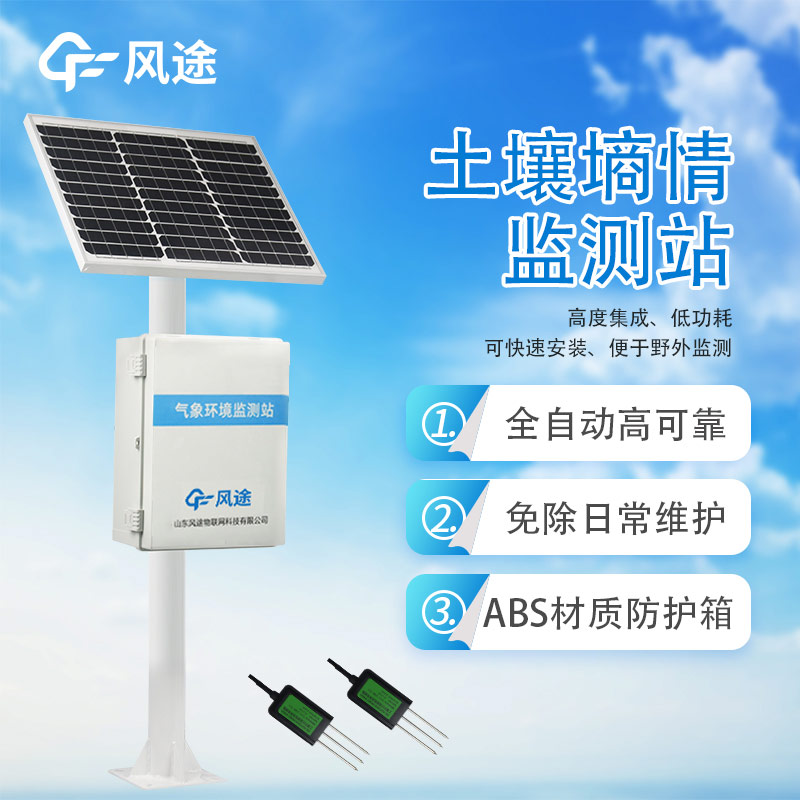Shandong Fengtu IOT Technology Co., Ltd
Sales Manager:Ms. Emily Wang
Cel,Whatsapp,Wechat:+86 15898932201
Email:info@fengtutec.com
Add:No. 155 Optoelectronic Industry Accelerator, Gaoxin District, Weifang, Shandong, China

Sales Manager:Ms. Emily Wang
Cel,Whatsapp,Wechat:+86 15898932201
Email:info@fengtutec.com
Add:No. 155 Optoelectronic Industry Accelerator, Gaoxin District, Weifang, Shandong, China
time:2024-11-12 09:25:54 source:Weather Station viewed:458 time
Soil moisture monitoring is of great necessity. Firstly, moisture determines the survival of crops. Soil moisture monitoring can keep track of soil moisture in real - time, ensuring the survival of crops. When there is a lack of water, irrigation can be carried out in a timely manner, and when there is too much water, drainage can be done promptly. Secondly, different crops and growth stages have different requirements for moisture. Monitoring soil moisture can accurately understand these requirements. For example, during critical periods such as wheat filling, rice filling, soybean pod - filling, and fruit expansion, sufficient moisture can be ensured to guarantee yield and quality. Thirdly, it can guide the layout of agricultural production. Areas with rainfall exceeding 400 millimeters are suitable for planting, while areas with little rain and lack of irrigation are more suitable for the development of animal husbandry. Monitoring can be used to select appropriate production methods and crop varieties accordingly. Finally, insufficient moisture severely affects yield, especially during the critical period of fruit growth. Soil moisture monitoring can detect water shortage problems in time and take measures to reduce losses.
In a large - scale wheat - growing area in North China, water resources are relatively scarce, and the rational use of irrigation water is of crucial importance.
Local farms have chosen to install soil moisture monitoring stations based on Time - Domain Reflectometry (TDR) technology. Multiple monitoring stations have been set up at different positions and soil depths in the wheat fields to monitor the soil moisture content in real - time. These stations can accurately transmit soil humidity data to the farm's management center.
Through continuous monitoring of soil moisture, farm managers can accurately formulate irrigation plans based on the water - requirement laws of wheat at different growth stages and the monitored soil moisture content. For example, during the wheat - filling stage, when the monitored soil humidity drops to the lower limit of the appropriate range, the irrigation system is turned on in a timely manner to maintain the soil humidity at the optimal level. This not only ensures the yield and quality of wheat but also reduces the amount of irrigation water by approximately 30% compared with traditional empirical irrigation methods, greatly improving the utilization efficiency of water resources.

The rainfall real-time monitoring system is widely used in hydrology, meteorology and flood control. It consists of rain gauge, data collector and computer. By analyzing and processing the rainfall information collected from the automatic monitoring stations, the rainfall value of each rainfall moni...
Carbon monoxide and nitrogen dioxide gases in mines pose great hazards to the safety of miners' lives and mine operations, which is the main reason for their monitoring.Carbon monoxide is a colorless, odorless, and tasteless gas. Its affinity for human hemoglobin is 200 - 300 times higher than t...
measures wind velocity in meters per second (m/s), miles per hour (mph), and kilometers per hour (kmh) are called anemometers....
In agricultural fields, the moisture status of the soil has a critical impact on crop growth. Excessively wet or dry soil may lead to poor crop growth or even death. Therefore, real-time monitoring of soil moisture can help farmers keep abreast of soil conditions, rationally adjust irrigation and fe...